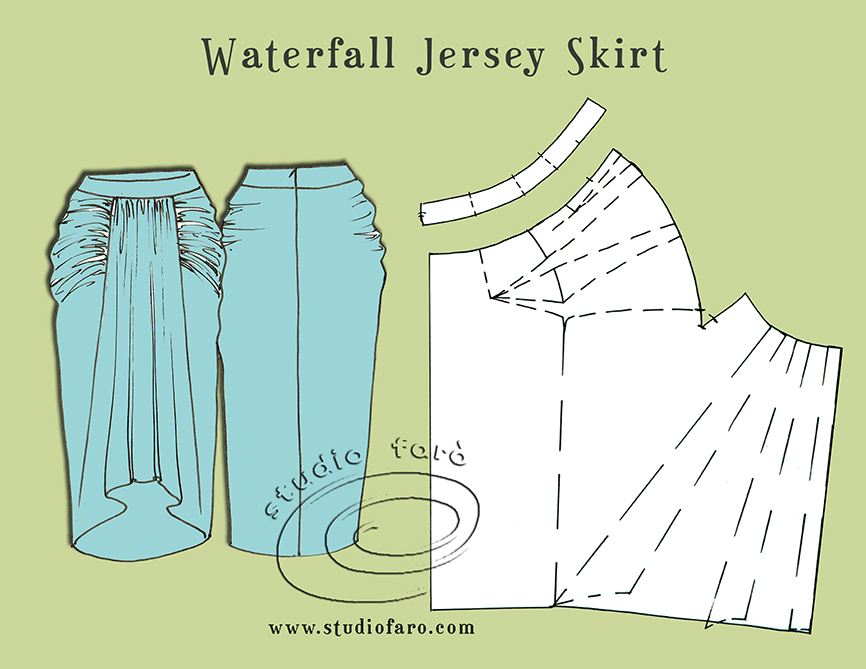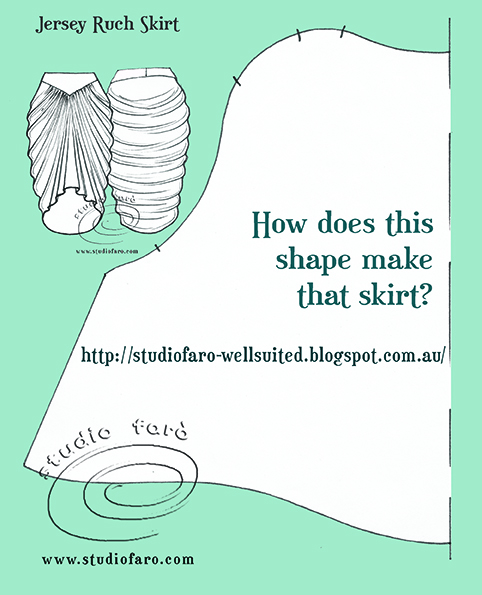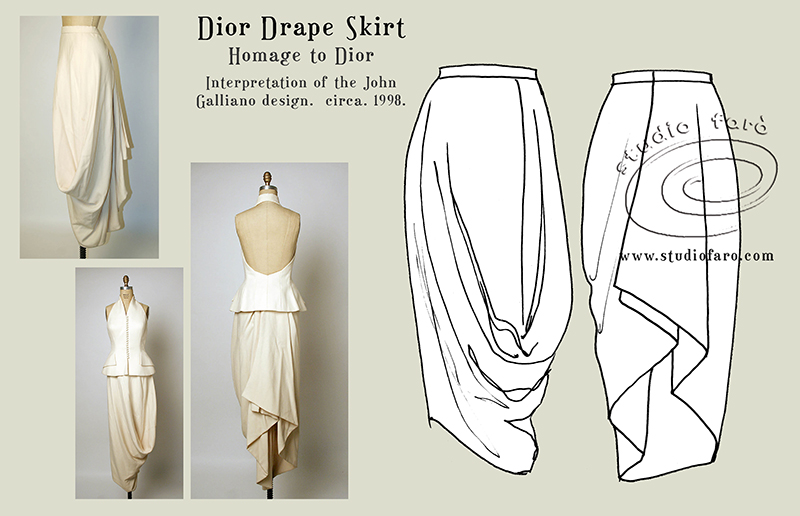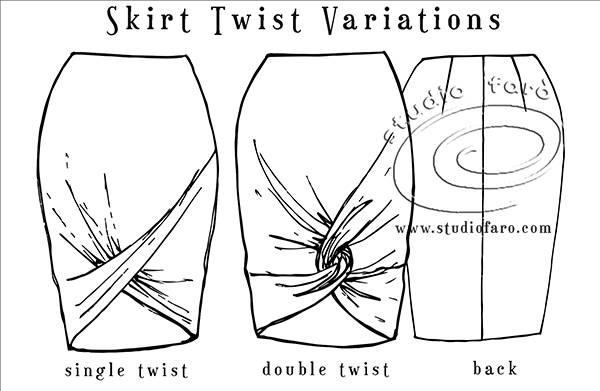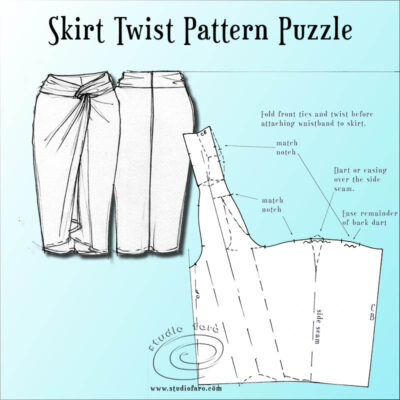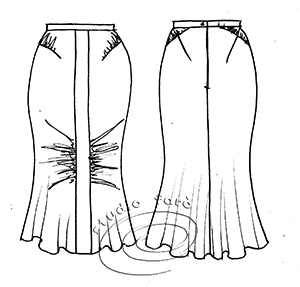This treasure was discovered in the archives of The Metropolitan Museum along with thousands of other beautiful pieces. Much to my surprise, I discovered that it is a fairly recent design by John Galliano for The House of Dior in 1998.
For this puzzle, the focus is on the skirt and not the tailored halter neck top. The combination of the well-organised waterfall drape at the back of the skirt and the cowl drape in the front of the skirt was fascinating to me.
